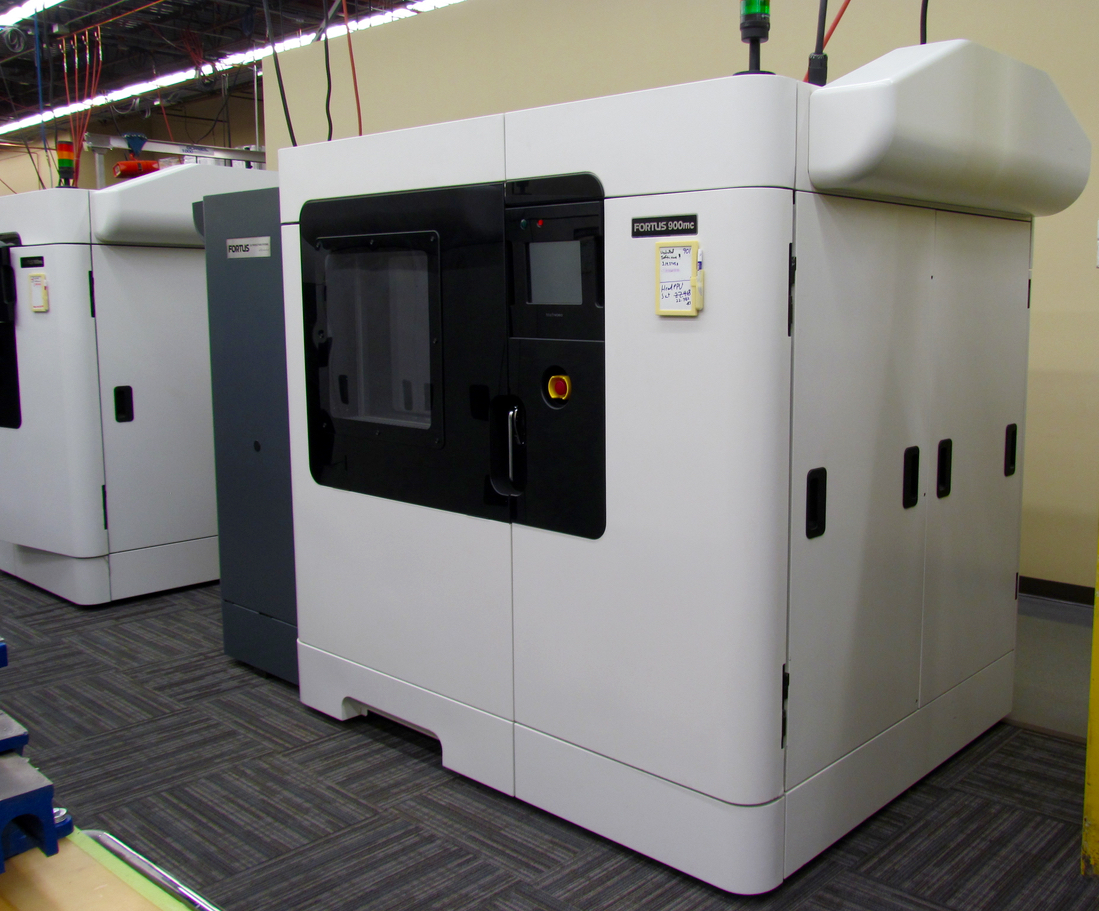
I’ve been hearing more mentions of “Industry 4.0” and “3D Printing” in the same sentence. What does this all mean?
In fact, Stratasys mentioned Industry 4.0 repeatedly during my visit to their HQ recently for the announcement of their new production 3D printing concepts.
The term “Industry 4.0” refers to a new style of manufacturing based on currently available technologies. It was first described as such by a German government report, but has since seeped into the understanding of manufacturers everywhere.
The “4.0” implies previous generations, and in fact they are described by Wikipedia:
The first industrial revolution mobilised the mechanization of production using water and steam power. The second industrial revolution then introduced mass production with the help of electric power, followed by the digital revolution and the use of electronics and IT to further automate production.
What is Industry 4.0? It’s simply a way to efficiently and effectively leverage new digital and robotic techniques into the manufacturing process.
Such technologies include: cloud services, IoT sensors and activators, robotics, wireless networking and more. These would be intelligently combined with manufacturing machines to create what one might call a “smart factory”.
Wikipedia describes the goals of Industry 4.0:
- Interoperability: The ability of machines, devices, sensors, and people to connect and communicate with each other via the Internet of Things (IoT) or the Internet of People (IoP).
- Information transparency: The ability of information systems to create a virtual copy of the physical world by enriching digital plant models with sensor data. This requires the aggregation of raw sensor data to higher-value context information.
- Technical assistance: First, the ability of assistance systems to support humans by aggregating and visualizing information comprehensibly for making informed decisions and solving urgent problems on short notice. Second, the ability of cyber physical systems to physically support humans by conducting a range of tasks that are unpleasant, too exhausting, or unsafe for their human co-workers.
- Decentralized decisions: The ability of cyber physical systems to make decisions on their own and to perform their tasks as autonomous as possible. Only in case of exceptions, interferences, or conflicting goals, tasks are delegated to a higher level.
Essentially this platform would provide a means to perform self-managed “flexible” manufacturing.
Could 3D printing fit into this paradigm?
Absolutely it could. In fact, 3D printing is perhaps one of the most “flexible” means of manufacturing, as literally each print could be unique. Of course, it’s more expensive than mass manufacturing, but there are many working on that problem.
Currently, however, most 3D printing equipment is more or less “standalone” and provides only simple, if any, interfaces to a larger manufacturing ecosystem.
I believe that 3D printers could be a significant part of Industry 4.0 implementations if they were able to add on control and operational mechanisms to make the printers more “independent” and thus more able to fit into a smart factory.
Today’s 3D printers require humans to “set up” the 3D printer. They’re required to unload the completed prints. They’re required to refill the material mechanism. They’re required to perform finishing operations, which often are done BY HAND.
Sure, the 3D printer can produce the object, but Industry 4.0 is all about the other stuff.
To properly participate in Industry 4.0 3D printer companies should, among other things, focus on the manual labor associated with their equipment. This is, I believe, a feasible thing to attempt give the current state of sensors and robotics. It is also feasible to redesign machines to be more forgiving in the event of problems. You can’t expect a robot to disassemble a clogged nozzle, clean it with chemicals or fire and reinstall it. But you could perhaps design a deposition system that is less susceptible to problems.
Imagine a 3D printer that was fully automated. Such a machine could be directed to operate entirely by software. And that software could be a cloud-based entity that leverages its entire ecosystem of manufacturing devices to create very complex products, piece by piece, in the most efficient manner.
The more sophisticated the software is, the more effective the manufacturing can become.
While that vision may be quite far off, it seems a highly desirable one. Don’t you think so?
Via Wikipedia

